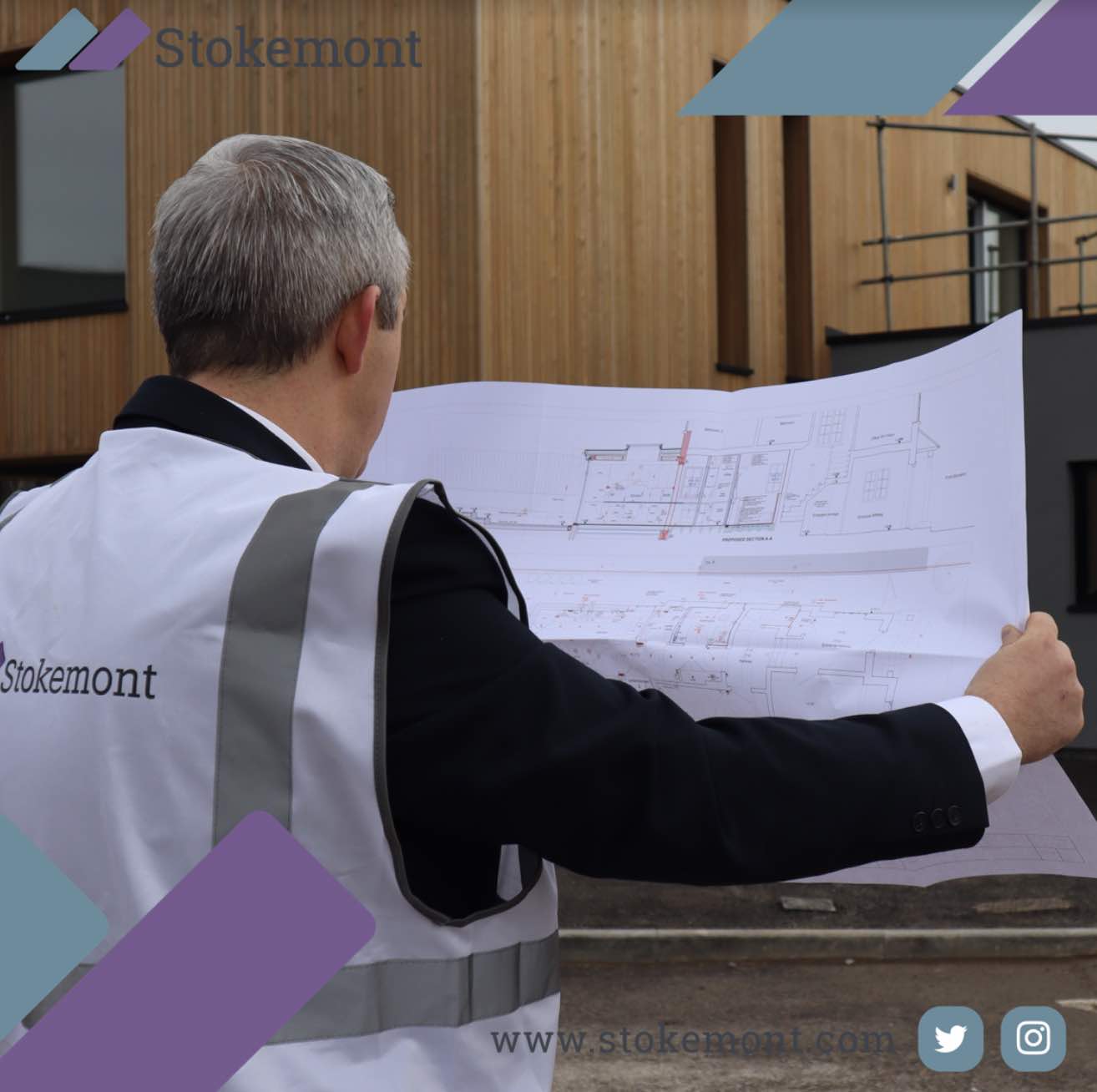Thank you for clicking on today’s property surveying blogpost topic. In this post we are going to be looking at party wall surveying procedures, in particular, the common question;
Do I need a Party Wall Surveyor?
Here at Stokemont we find ourselves asked this question on a daily basis, by both building owner and adjoining owner alike.
In order to answer this question the first point of call is to look at the wording of the Party Wall etc Act 1996. The Act, as it is known in the profession, sets out the various different scenarios whereby Party Wall Surveyors are required and therefore if indeed the advice is that a Party Wall Surveyor will need to be appointed.
First and foremost, in order to answer this, we’ve got to take a look at the type of works that fall within the realm of the Party Wall etc Act 1996. Under the Party Wall etc Act 1996 there are three distinct and different type of works that require the input of Party Wall Surveyors. We are now going to take a brief look at these in order to fully advise you.
Section 1 of the Party Wall etc Act 1996 – building walls up to or astride the boundary line
Under the Party Wall etc Act 1996 and as set out by the title, Section 1, if a building owner is planning on building a new wall, or walls, up to or astride the boundary line. Under the terms of the Party Wall etc Act 1996 and the legal requirement, the building owner will be required to serve a Party Wall Notice upon the neighbouring owner, known as the adjoining owner, a minimum of one month in advance of the works commencing.
This is a very broad area of works, however, here at Stokemont we would best describe it as new flank walls of extensions.
Whether these are extensions built to the front, rear, or side, if the walls are set out to interact with the boundary line, then the section will be relevant and a Party Wall Surveyor will be required to serve the Party Wall Notice, potentially even administer the Party Wall Award depending on Party Wall Notice response.
Section 2 of the Party Wall etc Act 1996 – works directly to a party wall, party structure or party fence wall
Section 2 of the Party Wall etc Act 1996 requires a building owner to legally serve a Party Wall Notice upon the adjoining owner a minimum of two months in advance of the proposed works commencing.
This section of the Act is one of the largest and has the widest scope in respect of construction works.
It would be exhaustive to go through each and every subsection of this part of the Act. However, generally speaking, this will cover any works to a party wall, party structure (which is effectively a floor or ceiling between flats) or works to a party fence wall (which is effectively a garden wall).
The Party Wall etc Act 1996 views these types of works towards the upper end of the risk spectrum, as the building owner is going to be undertaking works directly to a shared party structure, often cutting into or away from it thereby there is always going to a high degree of risk, or contractor error.
Here at Stokemont, we would best describe these types of works as loft conversions, removal of chimney breasts, works to garden walls, works to floors or ceilings, or any other work that requires construction to the shared wall or structure itself.
Section 6 of the Party Wall etc Act 1996 – adjacent excavation
The final section of the Party Wall etc Act 1996 is Section 6 of the Party Wall etc Act 1996. Section 6 of the Act deals with adjacent excavation, effectively meaning that any foundations that are dug within six metres of a neighbouring structure requires the service of a Party Wall Notice and the input of a Party Wall Surveyor.
Section 6 of the Act is another wide-covering part of the Party Wall etc Act 1996 and generally speaking all modern foundations are going to have to be at least one metre deep in order to comply with Building Regulations compliance and requirements.
With the vast majority of property stock in England and Wales being built around the 1900s (turn of the Century) or circa 1930s you are going to find that these types of properties have shallow foundations, or at the very least shallow by modern construction standards. With foundations of a depth of no more than a few courses of bricks and a corbel footing type being no deeper than 300mm to 400mm, this means that all modern foundations are going to be lower than older structures.
Party Wall Surveyors are required to not only serve Party Wall Notices but also to undertake Schedule of Condition reports and depending on the Party Wall Notice response, potentially agree a Party Wall Award.
It is worth noting that the Party Wall etc Act 1996 by its very nature is a facilitating act and the Party Wall Surveyor’s role is very much going to be to administer the Act from an impartial position and perspective in an effort of ensuring that the adjoining owner’s property has been considered through the eyes of the building owner’s construction works.
The Schedule of Condition report forms a big part of the Party Wall Surveyor’s role, as they are going to be undertaking a pre works inspection of the adjoining owner’s property in order to document and put in place a record of proof to its condition.
The pivotal benefit of this is that if there is a claim for damage further down the line, it is going to be very straightforward for the Party Wall Surveyor to definitively confirm if this damage is new and then make a decision as to whether the damage is as a result of the building owner’s construction works.
The final task a Party Wall Surveyor will undertake is to agree a Party Wall Award.
A Party Wall Award is a legal document, contract if you will, that governs the building owner’s party wall construction works. Importantly, the Party Wall Award will also legally protect the adjoining owner in the event of any issue or damage.
Party Wall Awards give adjoining owners and building owners alike protections above and beyond common law.
For this reason it is incredibly common that adjoining owners dissent to a Party Wall Notice and opt for the agreement of a Party Wall Award.
Jumping back to the title of this blogpost now, the requirement of a Party Wall Surveyor will very much depend on the works that are taking place. However, it will also be significantly determined and dictated by the adjoining owner’s Party Wall Notice response.
If an adjoining owner opts to dissent to the Party Wall Notice they are effectively asking for the input of a Party Wall Surveyor with the Party Wall Surveyor following all of the procedures as set out above.
Here at Stokemont, these days it is relatively rare to find adjoining owners consenting to Party Wall Notices.
Many will take the cautious approach and aim to ensure that they aren’t left having to rely upon common law which is exactly what the premise and purpose of the Party Wall etc Act 1996 is.
Benefits of Reaching an Agreement without a Surveyor
- It can save you money.
- It can be quicker and easier than going through the party wall process with a surveyor.
- It can help to maintain good relations with your neighbour.
The steps involved in reaching an agreement with your neighbour without a surveyor:
- Serve a Party Wall Notice on your neighbour.
- Discuss the works with your neighbour and try to reach an agreement. If you are unable to reach an agreement, you may need to appoint a party wall surveyor.
Risks of Reaching an Agreement without a Surveyor
- If you are unable to reach an agreement, you may have to go through the party wall process with a surveyor, which can be expensive and time-consuming.
- If you do not reach an agreement, your neighbour may be able to object to the works, which could delay or even prevent the works from taking place.
The Importance of Getting Professional Advise
Even if you are planning to reach an agreement with your neighbour without a surveyor, it is important to get professional advice from a chartered surveyor or solicitor. They can help you to understand the party wall process and to make sure that you are protected in case of any disputes.
So to conclude, a Party Wall Surveyor will be required, if indeed the works are covered by the Party Wall etc Act 1996, however, it will also importantly be required if the adjoining owner decides in receipt of the Party Wall Notice that they would like the input of a Party Wall Surveyor.
Here at Stokemont we are party wall specialists and undertake thousands of party wall surveying jobs each and every year.
If you would like to discuss how our RICS Party Wall Surveyors can be of assistance to you, give us a call today and we would be more than happy to assist and advise you.




